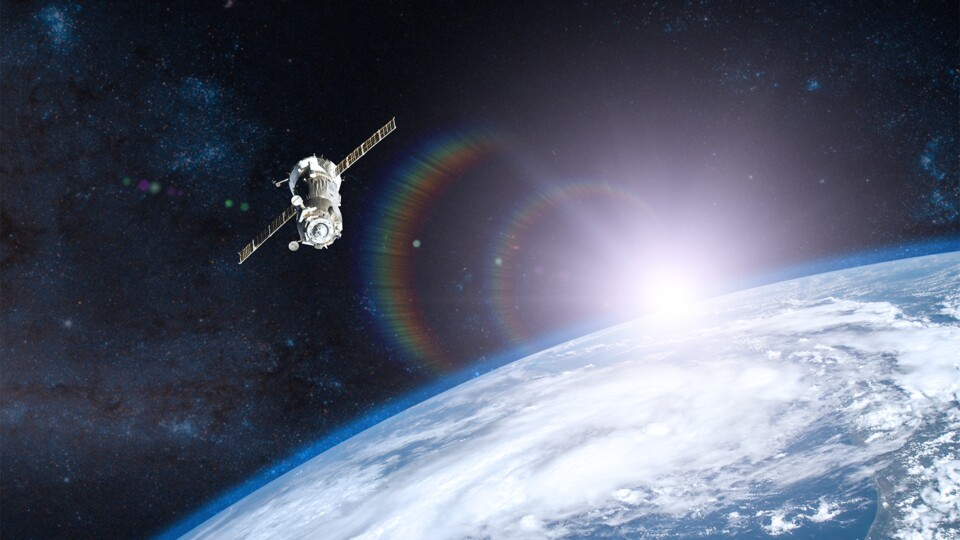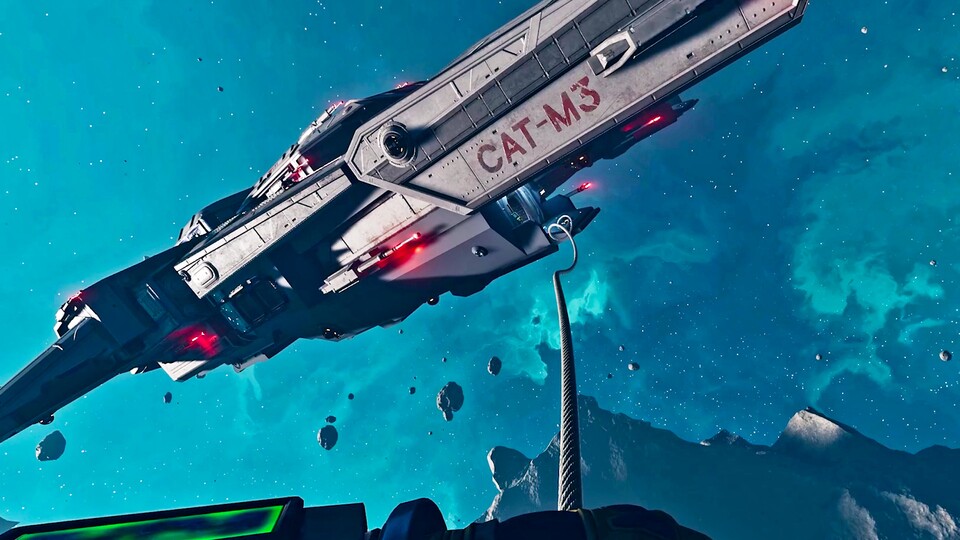
Thousands of satellites circle our earth side by side every day. Although there would actually be a lot of space, the risk of a collision is constantly growing – because we are constantly launching new satellites into space. (Symbolic image, source: Adobe Stock – Paopano)
Advertisement
A Russian and an American satellite miss each other at an altitude of 600 km. This message from the NASA from February 28, 2024 reads very harmlessly at first. A few days ago it became clear how close it really was.
In the event of a crash, the damage would probably have been enormous and could have caused global chaos.
Why we report on it: More and more space debris and satellites are circling in our Earth orbit and the risk of a crash is constantly increasing. If accidents happen here, it directly affects many areas of our everyday life that are becoming increasingly dependent on satellite technology:
- Navigation (GPS)
- Communication (telephony, television, internet services)
- Weather forecast (thanks to weather satellites)
- Emergency and rescue services often use satellites
- Agriculture (logistics)
In detail: In the early morning hours of February 28th, the satellites in question were racing at a high rate Earth orbit towards each other. Neither the Americans nor the Russians were, according to the magazine Xataka able to maneuver their satellite onto an alternative course. The satellites:
Advertisement
10 meters: Actually, there should be enough space for everyone in the vastness of space – one would think. How close it really was, wrote The Telegraph as recently as April 10, 2024. NASA Deputy Administrator Pam Melroy is quoted as saying:
Recently we learned that the distance between the two satellites is less than 10 meters fraud. […] If the two satellites had collided, we would have seen a cloud of debris.
However, the dangers of such an incident are not possible tensions between Russia and the USA. According to Melroy, if there is a crash, we are threatened with the following scenario:
Tiny splinters that come with 10,000 miles per hour moving around, waiting to poke a hole in another spacecraft, potentially endangering human life.
Miles to Kilometers: 10,000 miles per hour is approximately 16,100 km/h.
The result of such a collision? At worst, global chaos
The crucial question What if…
cannot be answered so easily. At best, the fragments move far away from all other satellites. The magazine described what could happen in the worst case scenario Xatakawith the Kessler effect.
Chain reaction through debris cloud: Perhaps the consequences of a collision would actually have been harmless and the thousands of splinters would have burned up at some point.
Also likely: A NASA nightmare scenario – the so-called Kessler effect:
- Debris from the first crash hits other satellites and destroys them
- These pieces of debris are difficult to detect = other satellites cannot avoid them
- More and more debris is flying uncontrollably through our orbit
- Like a cascade, such a mass crash would, in the worst case scenario, transform a large portion of our satellites into a gigantic cloud of debris
For those interested: The Kessler effect was first discovered in a study from 1978 recorded and examined by Donald J. Kessler.
Trailer worth seeing: The film shows how quickly a crash in space can get out of control Gravity. For film-technical reasons, the laws of physics are only adhered to to a limited extent – but you can get a feel for what a crash like this, complete with a cloud of debris, might look like:
Link to YouTube content
The consequences: Failed satellites would causing chaos worldwide. Container ships could go off course, truck and car drivers would get lost and the general communication of our global society could be severely disrupted.
That would at least be the grim climax of such a catastrophe scenario – which, at least in theory, is becoming increasingly likely. Because we humans are sending more and more satellites into space:
- Loud Statista were alone 6101 Starlink satellites shot into space (as of April 2024)
- Already in 2005 the estimated ESA: There will be a collision every 10 years
- This risk increases as the number of satellites increases
- It crashed for the last time in 2009 – several thousand were created splinter pieces


2:24
Crashing space action, wild co-op battles: Jump Ship really takes off
What do you think about the risk of a collision between two satellites? Did you know what the Kessler effect is? In this context, what do you think about the thousands of Starlink satellites that are being launched into space in large numbers? Feel free to write us your thoughts about it in the comments.